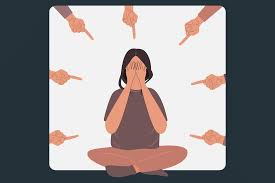The Loneliness of Modern Life: How Disconnection Became the New Normal

Never before have we been so digitally connected—and yet, so emotionally isolated. The paradox of the 21st century is that the more access we gain to instant communication, the more elusive authentic connection becomes. Modern life, with all its comforts and advancements, has silently bred a pervasive sense of loneliness. This loneliness isn’t always obvious. It lingers in group chats, hides behind selfies, and creeps into our lives in moments we least expect: in crowded subways, corporate offices, and even our own bedrooms. But how did we get here?
The Silent Spread of Social Disconnection

It didn’t happen overnight. The erosion of human connection has unfolded gradually, with technological progress outpacing emotional evolution. Social media, while initially designed to bridge distances, has commodified relationships. Friendships have become “likes,” emotions are measured in emojis, and silence is filled with noise. The quality of our interactions has diminished, replaced by convenience. Our phones buzz, but our hearts remain untouched. We live in a constant state of simulation—interfacing more with screens than with souls.
The Rise of Individualism
Modern culture idolizes independence, often at the cost of interdependence. Self-sufficiency is praised, while vulnerability is misunderstood as weakness. We are taught to chase personal goals, often detached from community well-being. While autonomy is essential, its over-glorification has created walls where bridges once stood. Many of us no longer know our neighbors, rarely engage in community rituals, and struggle to ask for help—because somewhere along the line, needing others became shameful.
The Psychology of Loneliness

Loneliness is not just a feeling; it’s a condition. Research links chronic loneliness to increased risks of depression, anxiety, heart disease, and even early mortality. It changes how we see the world—making us more suspicious, less empathetic, and emotionally numb. But the scariest part is how easily it becomes normal. People adapt to isolation, often mistaking numbness for peace. But beneath that silence lies a longing to be truly seen, heard, and held without judgment.
Where We Lost Touch
We stopped gathering. We traded local cafes for drive-throughs, parks for streaming platforms, shared dinners for on-the-go snacks. We replaced human nuance with algorithms. The rituals that once united us—communal meals, religious practices, family stories—have been minimized or erased. Modernity streamlined our lives but sterilized our connections. As a result, the very things that make us feel alive—shared laughter, spontaneous conversation, eye contact—have become rare luxuries.
How to Reconnect
- Be present: Put your phone down during conversations. Look into people’s eyes. Listen without waiting to reply.
- Rebuild community: Host dinners, join local groups, talk to neighbors. Small rituals build real bonds.
- Practice vulnerability: Speak honestly about your inner world. Invite others to do the same.
- Limit passive scrolling: Consume less and create more—write, speak, invite, reach out.
Conclusion: Reclaiming Belonging in a Disconnected World
The solution to loneliness isn’t always more people—it’s more presence. True connection starts with a willingness to show up, to risk being real, to trade the illusion of perfection for intimacy. We must relearn the art of togetherness, not through apps or networks, but through slow, honest, human moments. Because in the end, we don’t just want to be seen—we want to be known. And that begins not online, but face to face, soul to soul.

Loneliness is not a flaw in your personality—it’s a reflection of a world that has deprioritized depth for efficiency, and intimacy for immediacy. It’s okay to feel the ache of it. That ache means you’re still human in a culture that rewards numbing. The fact that you crave more is not a weakness—it’s wisdom. Beneath the skin of isolation lies the universal longing to belong—not just socially, but spiritually. We want to be part of something bigger than ourselves. This doesn’t always mean grand movements or utopian communities. Sometimes, it means showing up to a friend’s house with no agenda. Sometimes it means saying “I miss you” without shame. Other times, it’s as simple as acknowledging your own loneliness with kindness. If you can sit with your own silence long enough, you’ll begin to hear others more clearly. You’ll realize that nearly everyone carries some version of this same weight. What’s radical today is not noise—but stillness. Not networking—but nurturing. Not having more contacts—but deeper conversations. Modern loneliness is a call—not just to reach out, but to reach in. To ask not only, “Who can make me feel less alone?” but also, “How can I be a space where others feel less alone?” In this, connection begins to return.
Final Reflection: Reconnecting with Ourselves and the World
In a world that constantly pushes for more—more tasks, more connections, more achievements—it’s easy to forget that sometimes, less is more. The solution to modern loneliness isn’t about filling every moment with more people or more things. Instead, it lies in the willingness to slow down, listen, and reconnect with the simple, yet profound, aspects of life. We must remember that meaningful relationships are not built on constant activity or superficial exchanges. They’re nurtured through presence, vulnerability, and shared experiences. In moments of stillness, we open the door to true connection—not only with others but also with ourselves. When we allow ourselves to be present with our emotions, our thoughts, and the quiet moments between each day’s hustle, we begin to build a deeper sense of belonging. This doesn’t mean we should abandon technology or modern conveniences; it means that we need to intentionally create space for real connections. We need to prioritize face-to-face conversations, emotional honesty, and the quiet moments of reflection that allow us to recharge our inner selves. Loneliness is not a permanent condition. It’s a signal—a reminder that we need to reorient our priorities. It tells us that we’ve been disconnected, and it invites us to take a step back and reconnect with the world in a more meaningful way. By embracing moments of solitude, by practicing vulnerability, and by nurturing our relationships with authenticity, we can break free from the patterns of disconnection that modern life often imposes. And in doing so, we rediscover the joy of belonging—both in ourselves and in the shared human experience. It’s time to replace isolation with connection, one genuine moment at a time.
